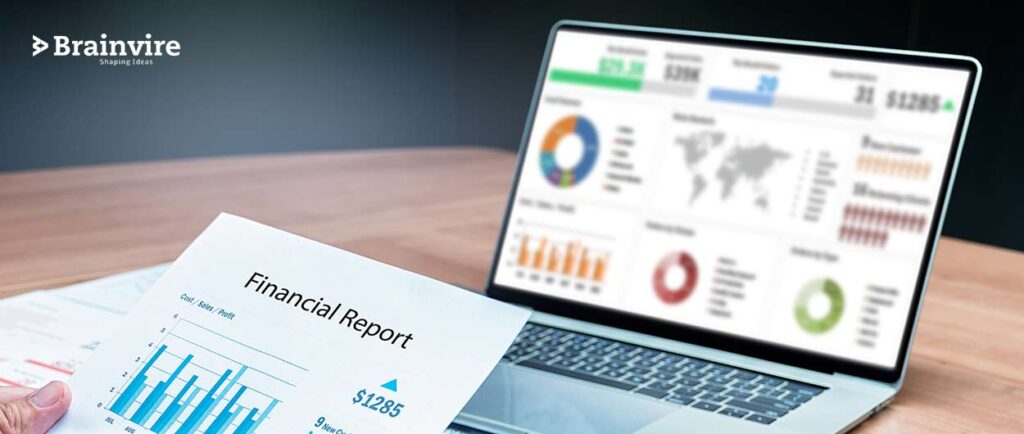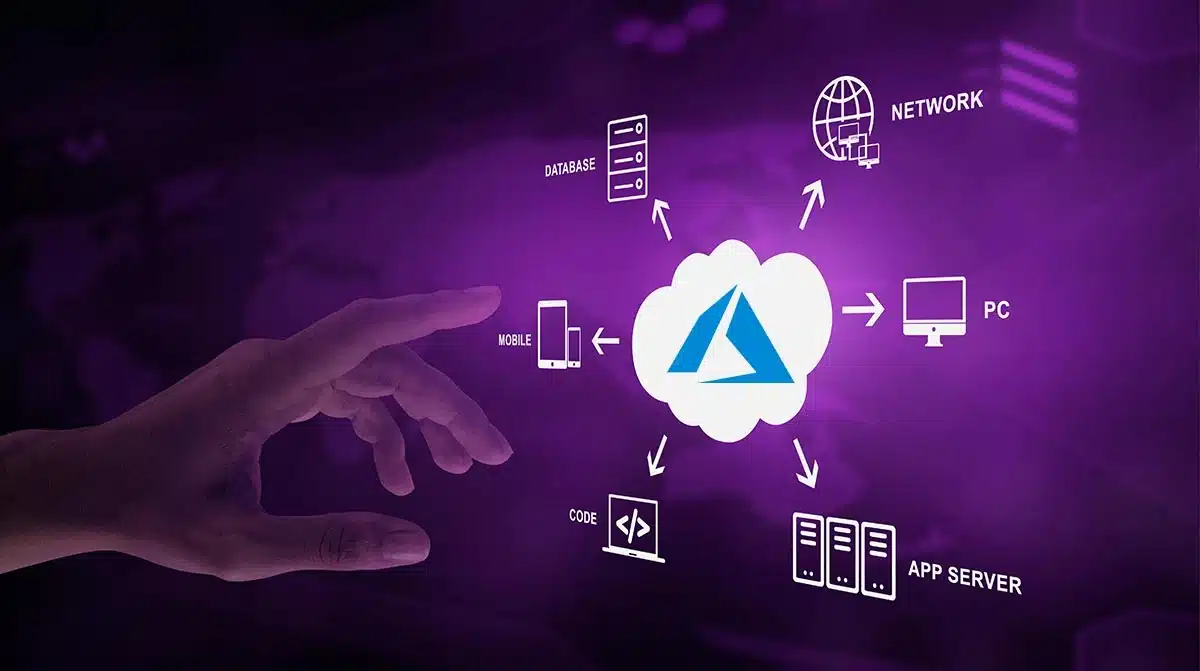Financial analysis and reporting are essential components of any modern business. With the help of online data analysis, companies can use financial data to share information both internally and externally, as well as leverage metrics to make improvements that affect profitability and operations.

This guide will provide an in-depth overview of the importance of financial analysis and reporting, and how it can help businesses remain compliant and successful.
Financial reporting and analysis involves the collection and monitoring of financial data about a company, including its income, costs, profits, capital, and cash flow. This information is used to guide strategic decisions and ensure compliance with taxation requirements.
These financial KPIs are essential in understanding the financial well-being of a company. Although they do not provide insight into a company’s culture or workings, they are still extremely important for the overall success of the business.
Financial analysis and reporting are vital for making informed decisions in a business environment and are also legally mandated for tax purposes. To do this effectively, financial reporting software and BI reporting tools can provide valuable data on investments, credit extensions, cash flow and more. As we move forward, we’ll look at the use cases of financial analysis and reporting in more detail.
Some of the most common types of financial reporting are:
The Income Statement:
Also known as the Profit and Loss Statement, is a financial report that outlines a company’s income and expenses over a given period of time. This statement is used to determine if the business is making a profit or loss, and focuses on four key aspects: revenue, costs, gains, and losses. It shows how much of the total revenue was used to cover operational expenses and production costs, and subtracts these expenses from the total revenue to calculate the total profit or loss.
Balance Sheet:
A balance sheet provides a snapshot of a company’s financial health at a particular point in time and is used for both internal and external purposes. It gives a detailed overview of the company’s assets, liabilities, and stockholders’ equity and can be examined by managers and employees to gauge the business’s progress. It can also be used by potential investors to gain insight into the company’s resources and how they were funded.
Cash Flow Statement:
A cash flow statement is a financial document that shows how much cash a business is generating and how it is being used. It combines elements of both the income statement and the balance sheet and is key for managing a business. Generally, the cash flow statement is divided into three sections: operating, investing, and financing. Operating cash flow examines the cash coming in and out of the business from income, costs, profits, and losses. Investing cash flow looks at cash from debt and equity purchases and sales. Finally, financing cash flow records long-term liabilities such as loan payments and equity operations such as stock sales.
This statement shows the fluctuations in shareholders’ equity during a given period, usually a year. It provides investors with information on their equity, how it is changing, and which business activities are behind those changes.
Calculating the difference between the company’s assets and liabilities, it forms an essential part of the balance sheet, although larger businesses may present it as a stand-alone document. The statement of shareholders’ equity is typically comprised of elements such as preferred and common stock, treasury stock, additional paid-up capital, retained earnings, and unrealized gains and losses.
Statement of retained earnings:
The statement of retained earnings is a document which outlines the total earnings of a business over a specific period of time, once dividends have been paid out to shareholders. It gives owners and decision makers insight into the financial health of the company and allows them to analyse potential reinvestment or expansion opportunities in light of the available retained earnings. This document can be generated as part of a balance sheet, income statement or as a standalone report.
ESG reporting:
ESG (Environmental, Social and Governance) reports are growing in popularity as legislators, societal expectations and investors focus on businesses’ environmental impact. This has made ESG factors important indicators of a company’s success, leading stakeholders to request that they be included in the company’s financial statements. A well-constructed ESG report should include environmental performance metrics such as energy use, greenhouse gas emissions, water usage, and waste generated; social metrics such as labor practices, human rights impact and diversity efforts; as well as governance metrics such as regulatory compliance, board structure and political contributions. This is especially important now as sustainable technology is one of the fastest-growing technological trends this year.
By utilizing an analytical approach, businesses can maximize their financial growth. In this post, we will explore the advantages of financial analysis and reporting, provide examples of successful finance reporting, and explain why it should be an essential element of any business plan.
Different Ways Of Financial Reporting And Analysis
The GAAP (Generally Accepted Accounting Principles). This is the system used by the United States, and almost no one else (just like the Imperial measurement system!).
The IFRS (International Financial Reporting Standards). This system is utilized by more than 110 countries around the world, including Canada, Australia, India, and China (although China and India have ‘customized’ the IFRS in their own ways).
The GDPR: (The General Data Protection Regulation): The GDPR came into effect on May 25, 2018, designed to modernize the laws that protect the personal information of individuals, which means that if you’re handling sensitive financial data of any kind, insights or metrics (involving that of your investors, clients or partners), you must ensure that your reports are compliant.
6 Common Types Of Financial Reporting
Interactive financial reporting software development to help businesses make sense of their financial data. This software uses predictive analytics, automated reporting, and intuitive dashboards to generate visual reports that allow companies to quickly analyze and gain insights into their financial situation.
Here, we will discuss five examples of various types of financial reports which were generated using a professional financial dashboard generator.
Income Statement Reporting Template
This financial reporting template provides a comprehensive analysis of a company’s fiscal year performance. It details the revenue earned and expenses paid during the period, providing a view of the company’s overall profits. Additionally, this template breaks down operating costs (OPEX) per month and per department, allowing decision-makers to identify any inefficiencies and pinpoint the source. Additionally, this template also provides a breakdown of the earnings before interest and taxes (EBIT) with a target line to gauge whether the business is meeting its financial goals.
Primary KPIs:
- Gross Profit Margin Percentage
- Operating Profit Margin Percentage
- Operating Expense Ratio
- Net Profit Margin Percentage
Balance Sheet Reporting Template
The balance sheet provides a snapshot of your assets and liabilities at a specific point in time. This report can help you analyze your profitability and cash flow, allowing you to make informed decisions for the future. Even if you have a healthy balance sheet, it’s important to consider your financial situation as a whole to prevent any potential problems.’
Primary KPIs:
- Return on Assets
- Return on Equity
- Working Capital
Cash Flow Statement Reporting Template
This report tracks the money which has come in and gone out of your business over a specific period of time. The cash flow statement is essential to ensure that you have enough money to cover expenses like payroll. This visually appealing template provides an overview of your company’s liquidity and current cash flow. It can be seen that the quick ratio displays an exclamation mark, which means that your company may not be able to pay off current liabilities with its most liquid assets. Moreover, the dashboard offers detailed breakdowns of Days Sales Outstanding and Days Payable Outstanding for the last 12 months, giving you the opportunity to identify improvement areas to boost growth and success.
Primary KPIs:
- Current Ratio
- Accounts Payable Turnover
- Accounts Receivable Turnover
Financial KPI Dashboard Reporting Template
A financial KPI dashboard is crucial to maintaining fiscal health and ensuring cash flow efficiency. It provides a comprehensive overview of key financial performance indicators, such as Working Capital, Cash Conversion Cycle, and Budget Variance, and is composed of tables, graphs, and charts to help you quickly identify inefficiencies, accurately forecast future trends, and optimize cash flow.
Primary KPIs:
- Working Capital
- Quick Ratio / Acid Test
- Cash Conversion Cycle
- Vendor Payment Error Rate
- Budget Variance
CFO Dashboard
This powerful CFO dashboard, referred to as the ‘CFO cockpit’, provides concise and detailed information on high-level fiscal metrics, essential economic trends and employee satisfaction. The dashboard also features the Berry Ratio, giving senior decision-makers the tools to identify emerging trends, make informed organizational decisions and meet (or even exceed) their profit targets.
Primary KPIs:
- Payroll Headcount Ratio
- Economic Value Added (EVA)
- Berry Ratio
- Employee Satisfaction
Accurate vs Forecast Dashboard
This financial reporting dashboard provides a quick overview of an income statement, complemented with forecasts for costs and income. It is a great tool for businesses to plan for the future and make sound decisions regarding budgeting and other operations. By breaking down the metrics by month, the dashboard allows for a more detailed analysis, such as the cost breakdown that shows all departments staying within the expected spending, except for marketing. In cases like this, it is important to investigate if the extra costs are justified or not.
Primary KPIs:
- Actual vs Forecast Income
- Actual vs Forecast Expenses
What Should a Successful Financial Reporting System Include?
In order to create a successful financial reporting system, it is essential to have certain elements in place. In the past, the tools and techniques used for report generation were static, making the process more time-consuming and manual. Today, however, reports can be generated with live data, allowing businesses to make decisions in real-time. The following are some vital components that should be included in a successful financial reporting system:
Real-time data:
Real-time data is essential for quality financial reporting. Having access to this data as soon as it is available allows business owners to make informed decisions that can help them achieve success and reduce potential risks. By understanding live trends and taking immediate action, they can allocate resources in the most effective way, control expenses that could hurt their business, and more. This type of data is invaluable for strategic planning.
Predictive analytics
Predictive analytics is essential for businesses that want to maximize their financial data potential. This technology combines current and past data to uncover patterns and trends from the financial information and make precise predictions about future outcomes. By using predictive analytics, businesses can anticipate upcoming product demand, identify possible loss drivers, and optimize other processes.
Automation:
Financial reporting used to be a highly manual process, requiring a great deal of time and effort to gather data, classify it and analyze it, resulting in reports that were often out of date by the time they were produced. Automation has become essential to reducing the strain on personnel and minimizing the risk of errors, allowing financial reports to be generated quickly and accurately with live data.
Accessibility and collaboration:
In order for a company’s financial goals to be achieved it is necessary to involve all departments and relevant stakeholders in the process. This is possible thanks to the level of accessibility and collaboration provided by modern financial analytics software. Reports are generated using interactive data visualizations that make the data in them easier to understand for non-technical users, plus, they can be easily shared in multiple formats to support meetings and discussions.
Related Articles
-
Blockchain and Decentralization: How Does It Relate?
Welcome to the world of infinite possibilities. We are talking about ‘THE NEXT BIG THING’ in the world, Blockchain. You might have read numerous write-ups about Blockchain, what is Blockchain,
-
Crucial Cloud Migration Checklist For Your Seamless Cloud Journey
Over the past few years, widespread global cloud adoption has been observed in the IT industry. Companies are increasingly investing in cloud migration and why wouldn’t they? Cloud migration provides
-
Architecting Cloud Solutions with Microsoft Azure
If you’re tasked with building a cloud solution that must scale with demand, ensure top-tier security, and optimize costs. Where do you begin? With its extensive cloud services and powerful




